SEO Content Analysis
Content optimization for Google’s algorithms has become critical for both businesses and bloggers in today’s competitive digital marketplace. Search engine optimization (SEO) increases your content’s organic traffic and visibility by improving its Google ranking.

You will discover how to use SEO content analysis to create outstanding blog posts, articles, and web pages by reading this article. It can result in increased online presence and above all better consumer experience.
What Is SEO Content Analysis?
A thorough method for assessing and improving website content for increased search engine visibility is content SEO analysis. Even if Google crawls your website, it doesn’t mean that your content will show up high in search results. For strong content, it is essential to comprehend this core idea, which is content analysis.
Check the health of your websites completely. You may modify your keywords, fix broken links, optimize formatting, discover out-of-date material, improve user experience, adjust meta descriptions, and more. During the planning step, you will also learn how to spy on your competition, determine what your segmented audience is looking for, and apply best practices to avoid previous mistakes.
Why Do You Need to Check SEO Content
To assess and rank a piece of content against particular thematically related search terms, a content analysis is carried out. The content library of a blog is then updated with more pertinent, SEO-friendly content based on the findings of the analysis. Both human and artificial readers, search algorithms, and users should be taken into account in an analysis.
Improve Readability and User Engagement
Readability, or writing quality, can have an impact on user engagement and SEO performance. Consider this: visitors are likely to leave your website and go to the next SERP result if they are unable to comprehend your content. Google evaluates directness and keeps subpar pages from ranking well in search results.
Prevent Duplicate or Thin Content Issues
Unfortunately, the likelihood of duplicate content rises with the number of pages. Along with different content snippets, some sites will utilize pre-existing templates. Content on other pages may be directly lifted from other assets, and so on. By identifying these issues, content analysis will assist you in producing more original material that will rank higher.
Enhance Search Engine Visibility
In addition to ranking higher in results, it receives more featured snippets, inquiries, and other SERP features. You can significantly improve your website’s rating by addressing issues identified during a content audit, such as broken links or insufficient keyword optimization. This enhances the possibility that your website will appear in SERPs, resulting in more organic visits.
Drive Organic Traffic and Conversions
Audits of website content are essential for preserving a powerful online presence. SEO content audits raise click-through rates, draw in targeted visitors, and provide steady, long-term traffic development. It guarantees that your content offers a user experience, supports your SEO tactics, and eventually increases organic search traffic and conversions.
Maintain Brand Voice and Consistency
Additionally, content audits are very helpful for finding ways to connect with your ideal clients more deeply and ensuring that your messaging, style, and tone of voice are all consistent. You may decide on content evaluation, updates, and creation needs with knowledge of what works and what doesn’t.
What to Analyze in Your Content
The process by which a content audit is carried out determines how successful it is. You are evaluating your web pages in several important categories during a full analysis.

The following will help you understand how to optimize content for search engines and users, regardless of your level of experience creating SEO material.
Content Quality and Readability
Writing informative articles should aim to leave the reader with a certain level of understanding. You wish to respond to their query. Similarly, you know that the goal of crucial landing pages is to position you as a solution for potential customers. Now, let’s examine how readability may influence Google’s decision regarding a site’s ranking.
How Readability Affects SEO
Readability may significantly boost your SEO results and is a key component of digital marketing. The capacity of your target audience to understand your information is generally referred to as readability. Effective communication and authority building are made possible by high rates.
Best Practices for Readable Content
Get rid of font imbalances and lines that are excessively long or that need scrolling. For improved readability, it is advisable to combine capital and lowercase letters. Inappropriate color selection or background-incongruent colors immediately destroy comprehensibility. The text becomes unreadable when the font and background contrast too much.
Keyword Optimization and Usage
It’s an essential component of an SEO plan since a potential consumer might not see the website if your keywords aren’t optimized. By incorporating optimal search terms into the text of your website, you can engage with potential clients directly and meet their demands. You will then learn how to cover a topic in detail, which will give your page more authority.
Identifying Target Keywords
For keyword research, use your preferred SEO tool (such as Moz, Ahrefs, or Semrush). You may find that there are new search terms you may target or that some of your existing keywords aren’t attracting the correct kind of traffic. You can identify underperforming pages that need a makeover by examining your ranking for various queries.
Proper Placement of Keywords in Content
After the keyword research, it’s crucial to incorporate your main keywords into your writing without using them excessively. Using your main keyword in the page title and your most crucial secondary search terms in any subheadings is a smart strategy. If it comes naturally to you, you can also incorporate primary and secondary terms throughout the website.

Content Structure and Formatting
Tone, pace, and organization are all important considerations when writing. Even if you’re writing to optimize your content for SEO, a well-written post will improve the content regardless of what you’re writing. Potential clients will reach your page through SEO, but you must keep them engaged with valuable content.
Using Headings (H1, H2, H3) Effectively
Headlines and titles are much more important because most people will click elsewhere if we can’t grab their attention in a few seconds and stand out in a SERP full of competitors. As a result, make sure your headline (H1) contains your main keyword and is clear and descriptive. Use them in each of the subheadings (H2, H3) that you create for your content.
Paragraph Length and Sentence Structure
A paragraph that is SEO-friendly should be rather brief. Try to limit paragraphs to no more than ten sentences. You can blend shorter and longer paragraphs to create a nice read; therefore, you can have some longer paragraphs. However, you could need to write two paragraphs on a topic that is too broad; make sure to evaluate your topic.
Technical Aspects
The structural and infrastructural elements of a website that affect its crawlability, indexability, and general search performance are referred to as technical SEO aspects. This makes technical SEO even more important. Having a solid technical foundation will guarantee that search engines can find and get the material you create.
Internal Linking
Any link that connects one page of your website to another is internal. Links help search engines and consumers locate content on your website. Links allow users to move about your website and locate the material they’re looking for. Links are also used by search robots to navigate your website. If there are no links to a page, they won’t see it.
Image Optimization (Alt Text and File Names)
Both SEO and accessibility are enhanced when photos are optimized using alt text and descriptive file names. In addition to serving as alt text for image links, alt text assists screen readers in providing visually challenged users with descriptions of images. Descriptive file names help with image search ranking by telling Google what an image is about.
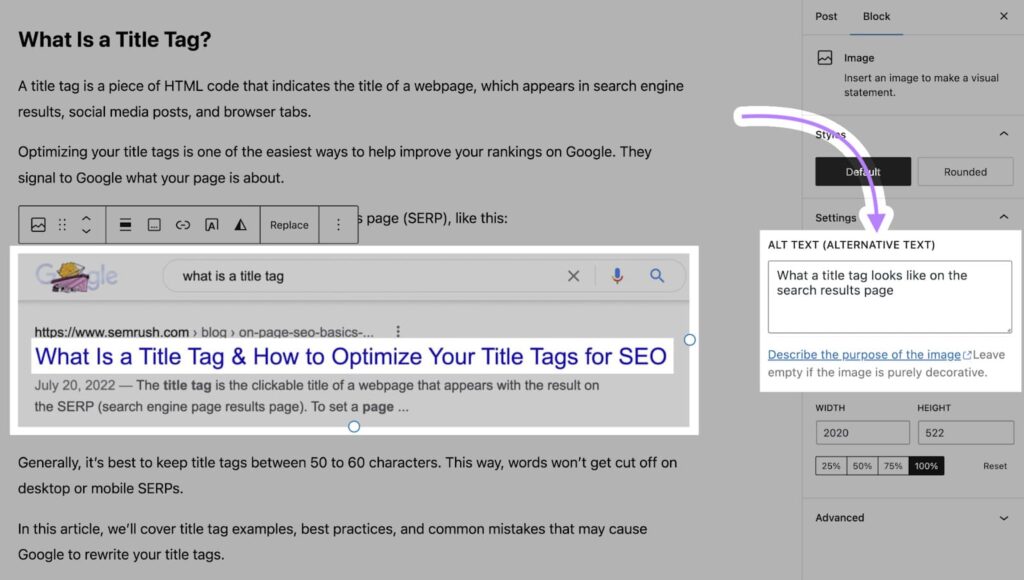
How to Perform an SEO Content Analysis
You should keep in mind that content analysis will assist you in measuring the frequency of particular words, phrases, themes, and concepts in text. Additionally, it can be applied when you wish to draw qualitative conclusions from the data by examining the semantic meanings and connections of words, themes, and concepts.
Now let’s examine the procedures you must adhere to when conducting this analysis.
Define Your Goals and Objectives
It is where you begin. With the following inventory, what goals do you hope to accomplish? (for instance, increasing user engagement, optimizing on-page SEO, and decluttering). The kinds of content that will be featured must be specified. Which platforms like a website, social media, or email marketing will be used?
Inventory Your Existing Content
A content audit, which entails a more thorough qualitative examination of your content, requires a content inventory. A thorough inventory is necessary before you can analyze already-existing content. It offers a basic synopsis of your digital assets and permits more in-depth examination at a later time.
Measure Content Performance
The first stage in the intended analysis is to review all content-related data to assess various pertinent indicators and KPIs. This procedure usually takes a long time to execute by hand. Any component or group of URLs can be tagged with SEO tools, which also provide you access to performance information for specific pages.
Check Quality and Relevance
After you’ve created your keyword strategy or semantic center and grouped subjects using a scheduled analysis tool to gather valuable information, it’s a good idea to consider consumer intent. Additionally, make sure your information is simple to read and comprehend. Use brief words and paragraphs, and proofread for spelling and grammar mistakes.
Check for Duplicate
By avoiding duplicate material, you take charge of what gets indexed and ranked instead of letting Google do it. To aid in ranking, you can combine indexing and link signals and reduce crawl budget waste. Any duplicate content found by a tool must be examined contextually.
Review On-Page SEO Elements
Enhancing different web page elements to increase online exposure and relevancy is the main goal of on-page SEO. In essence, you are maximizing the influence of headers, URL structures, meta tags, and meta descriptions on search rankings. For instance, you can utilize headings that are packed with search terms and appropriately convey the topic.
Identify Content Gaps and Opportunities
To identify opportunities for improvement, this approach entails carefully examining the performance, relevance, and efficacy of your current material. Start by grouping your material into specific categories, such as blog posts, educational articles, manuals, or landing pages. Make sure the appropriate word is used to optimize every piece of content.
Document Findings and Create an Action Plan
Clearly defining the issue or opportunity and outlining the precise actions required to resolve it are the first stages in efficiently documenting findings and developing an action plan. Determine important areas of focus, trends, and patterns. Assign tasks, assign resources, include a schedule, conduct keyword research, and set up metrics to gauge performance.
Best SEO Content Analysis Tools
To produce pertinent, thorough, and highly ranked material, SEO content checkers assist you in determining the subjects, phrases, and queries for your target inquiry. These tools help you write content that is optimized for this term and streamline your SEO efforts. Seek out a platform that provides keyword signals, such as semantic phrases, along with recommendations for how often to employ them.
1. Clearscope
Clearscope offers a content editor to help you optimize your articles for Google Search, supports content production with AI assistance, and assists you in finding new search terms to target.
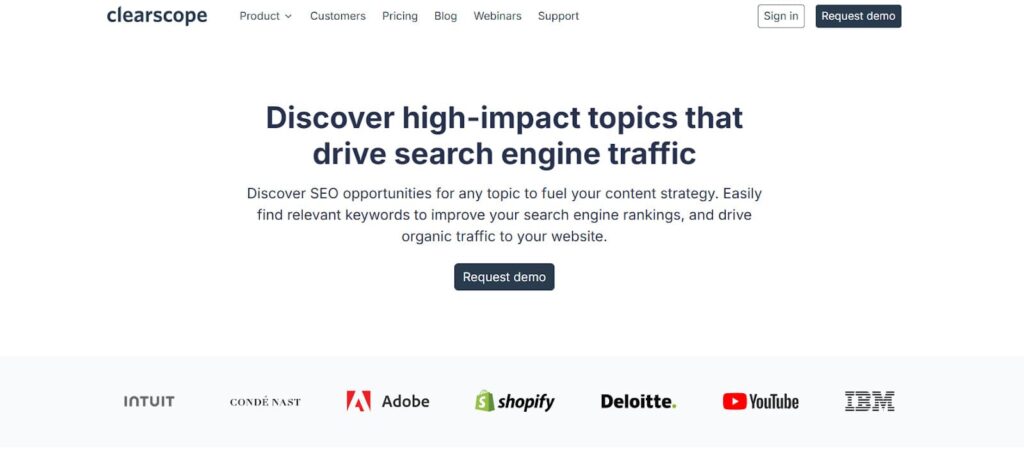
You can identify pertinent questions to target with the help of the Keyword Discovery tool. To obtain a list of words that the website is ranking for as well as its primary metrics, you can search using the URL of the website.
2. Surfer SEO
To increase potential, SurferSEO Checker features a content editor that gives you immediate feedback on your writing by assessing elements like keyword utilization and general structure.
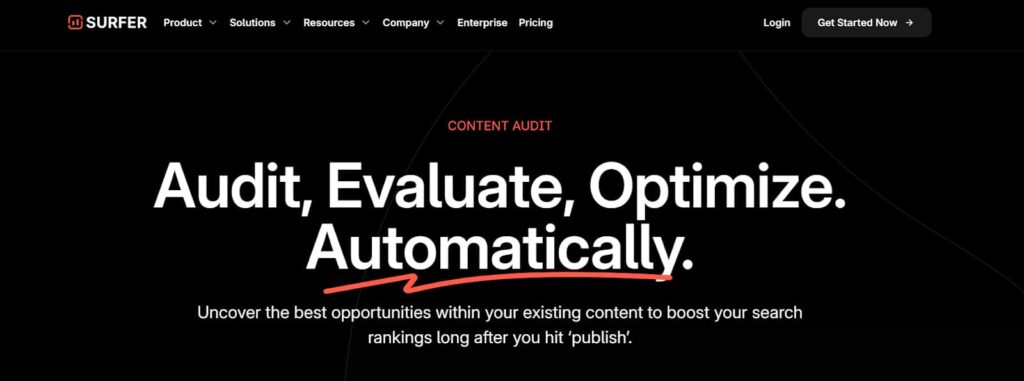
You can find effective patterns by using the SERP analyst feature, which looks at the pages that rank highly for the terms you have selected. You can create topic ideas with the content planner that are specific to your audience and niche.
3. Frase
A variety of options are available in Frase to improve your content SEO analysis. The checker offers real-time feedback while you write to make sure your work satisfies SEO guidelines and high standards.
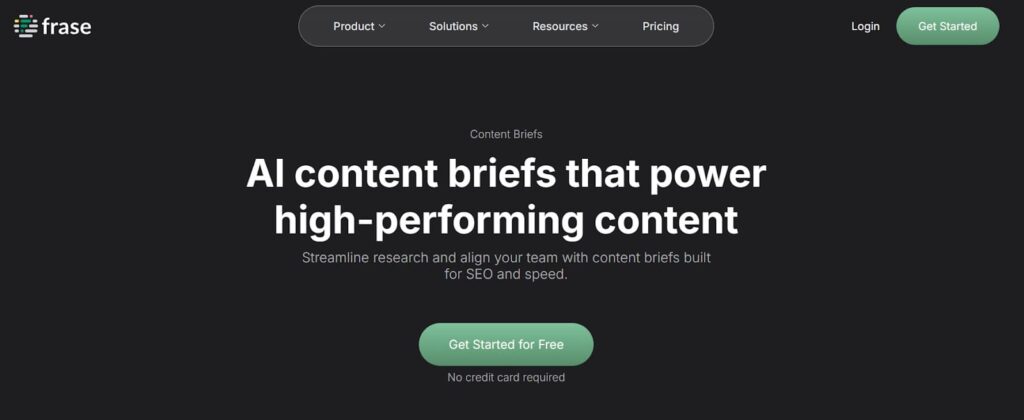
You can create outlines using competitive insights and suggested subjects using its content brief generator. It offers statistics that point out areas in need of development.
4. GrowthBar
GrowthBar is a powerful tool for content improvement because of its array of AI and SEO features. One of the SEO features is a simple tool for keyword research.
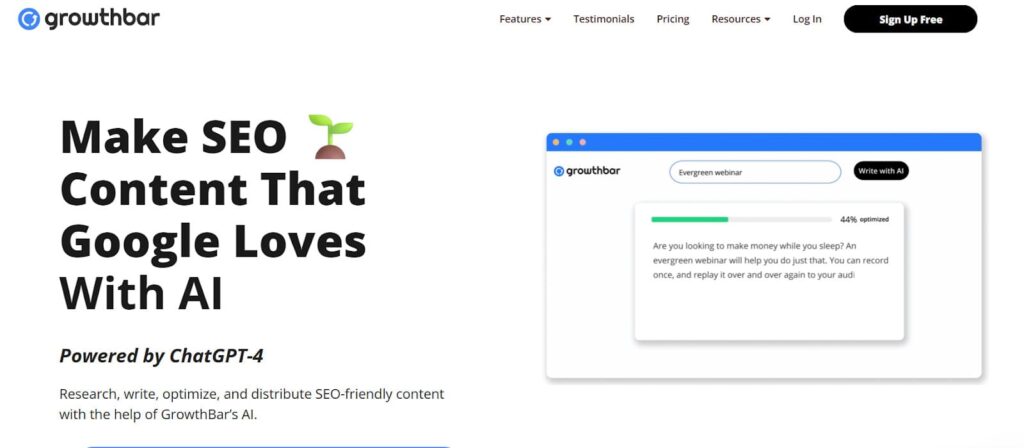
It may be a good choice for a summary of SERPs and important metrics for your search terms, even though it doesn’t offer as much information as other platforms.
5. Ahrefs
Ahrefs provides a variety of smart tools for conducting a content SEO analysis. You may remain ahead of the competition in your niche by using their content checker to find ideas for pertinent material and examine the tactics used by your rivals.
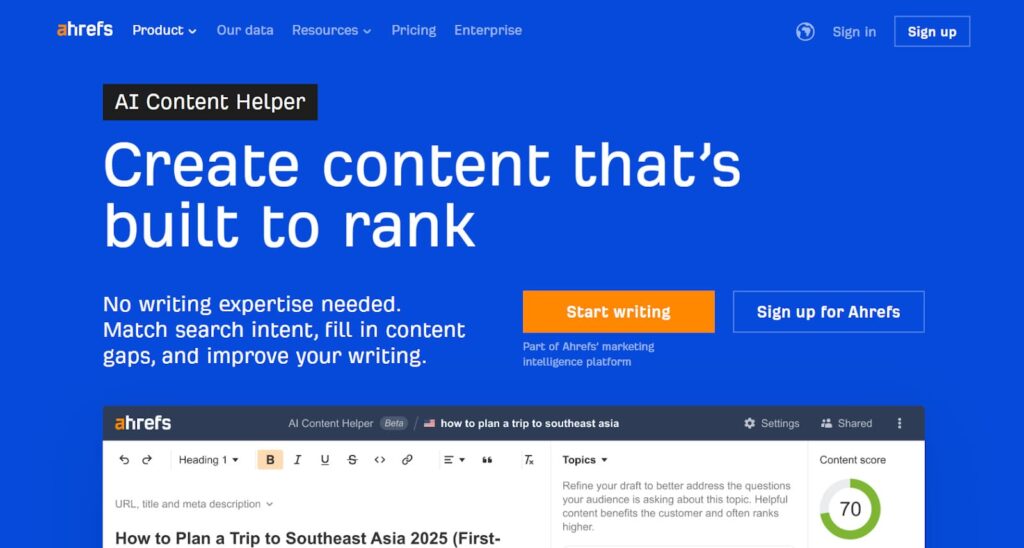
You can gauge the success of your SEO efforts with Ahrefs’ Rank Tracker, which tracks your term ranks and progress.
FAQs
How often should I perform an SEO content analysis?
This kind of content marketing analysis should be performed regularly, at least twice a year, but more frequently if the industry is rapidly developing or competitive. A complete audit is advised once a year, with smaller, maintenance-focused audits every quarter or month.
What is the best SEO content analysis tool?
Although the “best” content-evaluating tool will depend on your budget and particular requirements, Surfer SEO and Frase are frequently suggested due to their extensive feature sets and AI-powered analysis. Dashwood and Clearscope are two other noteworthy choices.
Can I do SEO content analysis without tools?
Although it could take more time and effort, it is possible to perform content review without the use of professional tools. Even if premium tools come with more sophisticated features and extensive data, you can still get good results with free resources and your abilities.
How does content analysis improve my SEO strategy?
To produce pertinent, thorough, and highly ranked material, several SEO-focused tools assist you in keyword research determining the subjects, phrases, and inquiries for the query. These tools help you write content that is optimized for this term and streamline your efforts.





